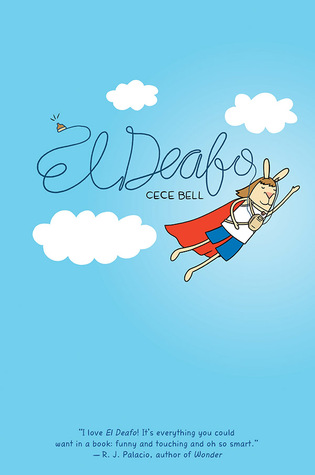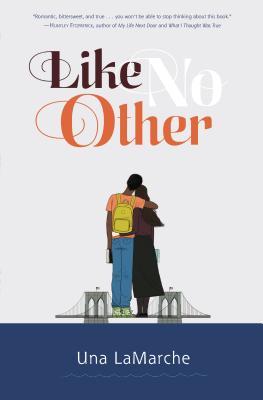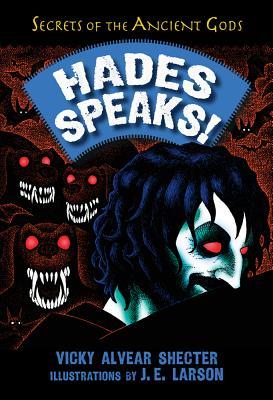
It's almost here! Time for nominating your favorite books of the year for the
Cybils awards. You can start on October first, but make sure you are familiar with the different age and genre divisions before nominating a book! If it has talking animals, witches, ghosts, or magic of any kind, it is NOT in Middle Grade Fiction, but belongs in Middle Grade SPECULATIVE fiction!
Always a fun time. I love seeing what books show up on the MGF list!

Bell, Cece.
El Deafo.
September 2nd 2014
by Harry N. Abrams
ARC from Baker and Taylor
This graphic novel memoir chronicles the author's experiences with hearing loss. After a childhood bout with meningitis at age 4, Ms. Bell had limited hearing and was taught to lip read. She had a variety of hearing aides, some which worked better than others, and a variety of friends, some of whom had issues with her hearing loss and some of whom just had issues. When things get difficult, Bell occasionally would fantasize that she was the super hero El Deafo, and there are dream sequences about what she wishes she could do. At one point, her mother wants her to take a sign language class, but having relied on lip reading, Bell is not thrilled with this idea. This follows the main character up through middle school, deals with a crush on a cute boy, and is generally a great, realistic picture of how one person went through early school years with a hearing loss.
Strengths: There are very few characters in middle grade books with hearing loss, so the details of what Bell experienced were interesting. I especially appreciated the after note where she said that this was a chronicle of just HER experience, and that there are so many different ways to deal with this. I have one student who is a huge reader has a sign language interpreter; I asked her if she would like the book and explained that while it was about a girl with a hearing loss, she doesn't use sign language. My reader was still thrilled to see the book, and is looking forward to the full color version. This will be popular with readers who like graphic novels, but is an interesting story even without the pictures. The friend and boy drama are squarely middle grade and are as important as Bell's dealings with her issues of being different.
Weaknesses: While using rabbits certainly sets this apart from Smile (knew I couldn't get through the whole review without mentioning that!), it was a bit odd. Bell is clearly about my age, given the cultural references, so it might have been helpful to have a year mentioned, so that readers would have an idea that the technology of hearing aids might have changed a bit. (My cousin had a device similar to Bell's Sonic Ear, and it was a very large device; even my reader says that before she got an implant, she had a unit that was rather cumbersome.)

Green, Tim.
First Team (Sequel to
The New Kid)
September 30th 2014 by HarperCollins
Brock and his father have narrowly escaped after a harrowing
airplane crash, and have decided to lay low in Calhoun, Ohio. They finally
think no one will find them, but this puts them in a tough place for money.
They rent a run down house in the Flatlands, and Brock’s father gets a job as a
“sanitary engineer”. Brock (who has invented a story about his name so he can
remain that), runs into football playing Mak and decides to try out for the
team, even though baseball is more his thing. Because of his size, the coach
decides to give him a try. His skills would indicate he would be a great
quarterback (is this something that ALL football players want to be?), but
there is already a quarterback on the team… Coach Van Kuffler’s’ nephew. Brock
also runs afoul of other player Wentzel because he is from “the wrong side of
the tracks”. Despite this, Brock learns football plays for Taylor Lehman, who
is on the high school team and being sought by colleges. It doesn’t hurt that
Taylor’s sister, Laurel, is not only cute and nice, but works in the town
library, and that their divorced mother seems to get along really well with
Brock’s father. Mak is tremendously supportive through all of the trouble on
the football field, which involves key players becoming injured so that Brock
gets a chance. However, all of this is put into jeopardy when Brock’s father’s
past almost catches up with them, although salvation arrives from a very
surprising source.
Strengths: As always, LOTS of football stuff. Apparently,
coaches call plays and players get in trouble for not following them, even if
the choice they make ends in points for the team? Remember, I haven’t watched a
football game in over 30 years! Brock and his father have a great relationship,
Mak is fantastic as a new friend, and Laurel… sigh. Perfect middle school
romance. Perfect. She is impressed that Brock is reading Stead’s When You Reach Me, tries to get him to
read The Fault in Our Stars (and he
has a perfect reaction to that), and the two meet on really equal ground and just
enjoy being around each other. The down-and-out Appalachian community is a
great setting, and the spy stuff is just icing on the cake. (Or insert
appropriate sports metaphor!)
Weaknesses: The spy stuff is over the top, but I loved it.
Evil coaches must be a real thing, but they always make me pause. It’s a lot of
work to coach if you’re just in it to be evil.
Personal Rant: Also, what the heck is with the sheer number
of football coaches? There are only 11 players on the field from each team? I’m
sure there are more that are on the team, but they are in a confined space. We
had over 50 cross country runners, and the district only pays for one coach?
Not understanding.
Anastasia Suen's blog.
 Baker, E.D. The Fairy-Tale Matchmaker
Baker, E.D. The Fairy-Tale Matchmaker














































